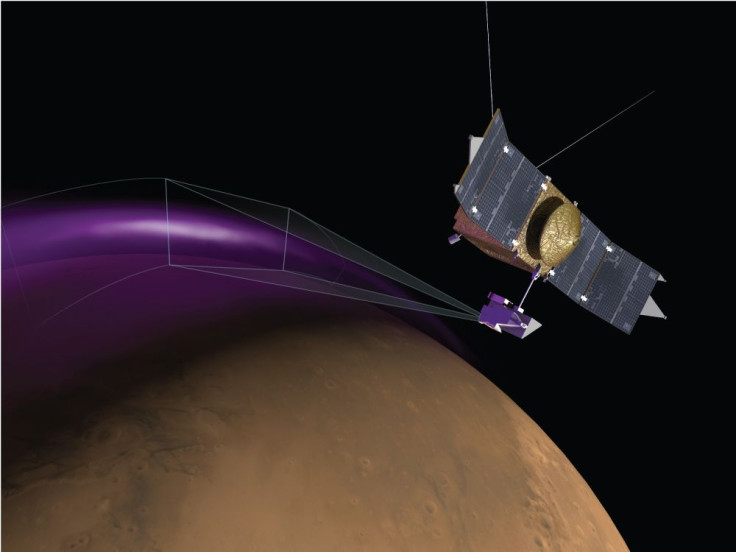NASA’s MAVEN Spacecraft Observes Unusual Proton Aurora On Day Side Of Mars

When it comes to sky watching, auroras or colorful light shows seen on the poles – popularly dubbed as aurora borealis and aurora australis – are hard to ignore. They occur following an interaction between highly charged particles from the sun and gases prevailing in our atmosphere and are simply amazing.
However, Earth is not the only planet witnessing auroras. The phenomenon has also been spotted on gas-giants like Jupiter and Saturn, and just recently, NASA’s Mars Atmosphere and Volatile Evolution mission (MAVEN) spacecraft found an unusual type aurora occurring on the day side of Mars.
Typically, aurora occurs when high-energy electrons interact with gases, but the case spotted on the red planet was different. Here, protons have been found to be creating auroras, something which is extremely rare.
Though it is difficult to spot an aurora on the day side, the strange light show was seen when MAVEN, which has been orbiting the red planet since 2014, was using its Imaging UltraViolet Spectrograph or IUVS instrument to study the atmosphere of Mars.
As the team controlling the instrument took the observations, the brightness of UV light coming from hydrogen gas prevailing in the upper atmosphere grew mysteriously. The glow lasted for a few hours and was later confirmed to be an effect of solar wind — a stream of charged particles released from the upper atmosphere of the sun.
When a solar wind occurs, the sun ejects a strong pulse of protons — hydrogen atoms that have lost their electrons due to extreme levels of heat — at speeds up to two million miles per hour. The particles then traveled to Mars and interacted with its atmosphere, creating the strange aurora observed.
Under normal conditions, the bow shock of Mars, a magnetic obstacle that diverts charged particles driven by the solar wind, should have blocked the incoming protons, but here the situation was different.
“As they approach Mars, the protons coming in with the solar wind transform into neutral atoms by stealing electrons from the outer edge of the huge cloud of hydrogen surrounding the planet,” Justin Deighan, lead author behind the study detailing the new aurora, said in a statement. “The bow shock can only divert charged particles, so these neutral atoms continue right on through.”
On moving ahead, these high-speed atoms hit the atmosphere and interact with several molecules — a process that releases some energy of the particles in the form of ultraviolet light. The emission is too low to be detected by humans but can be captured using high-precision instruments, just like how it happened in this case.
“The Martian proton auroras are more than a light show,” Jasper Halekas of the University of Iowa added in the NASA statement. “They reveal that the solar wind is not completely diverted around Mars, by showing how solar wind protons can sneak past the bow shock and impact the atmosphere, depositing energy and even enhancing the hydrogen content there.”
Such auroras have been spotted on Earth but only on a few occasions around the poles. On Mars, on the contrary, they occur from time to time and are not limited to one particular location. This, as the researchers posited, might be an effect of Earth’s strong magnetic field, which diverts solar wind to a much greater degree than that of Mars.
© Copyright IBTimes 2025. All rights reserved.





















